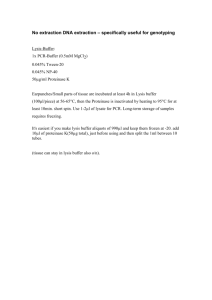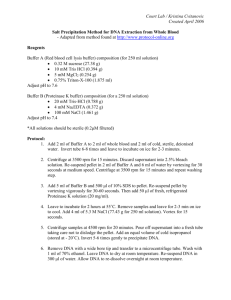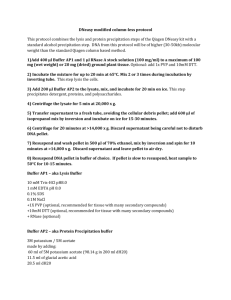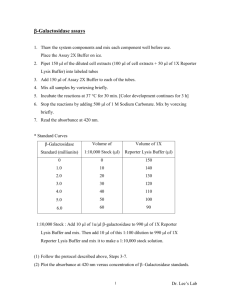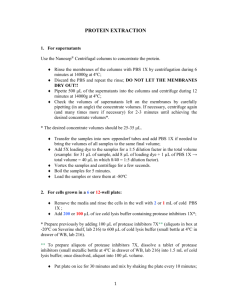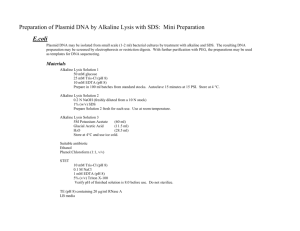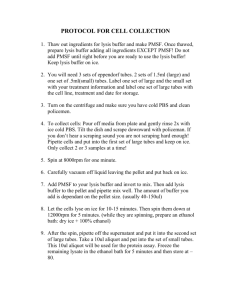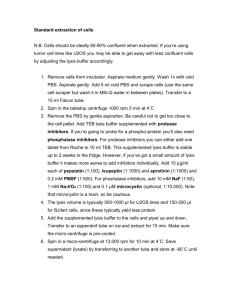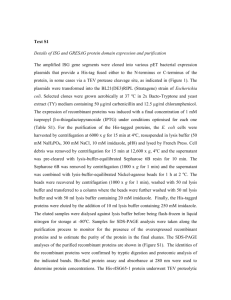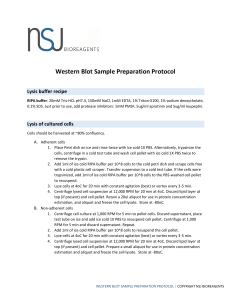web DNA extraction from ES cells in 24 well
advertisement
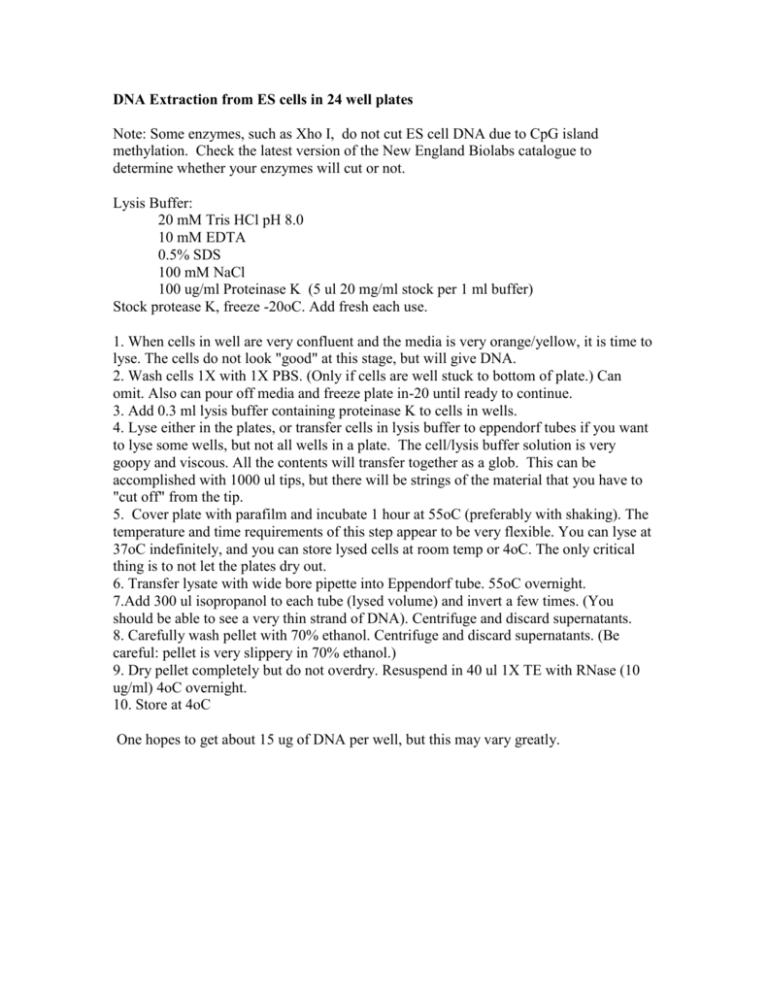
DNA Extraction from ES cells in 24 well plates Note: Some enzymes, such as Xho I, do not cut ES cell DNA due to CpG island methylation. Check the latest version of the New England Biolabs catalogue to determine whether your enzymes will cut or not. Lysis Buffer: 20 mM Tris HCl pH 8.0 10 mM EDTA 0.5% SDS 100 mM NaCl 100 ug/ml Proteinase K (5 ul 20 mg/ml stock per 1 ml buffer) Stock protease K, freeze -20oC. Add fresh each use. 1. When cells in well are very confluent and the media is very orange/yellow, it is time to lyse. The cells do not look "good" at this stage, but will give DNA. 2. Wash cells 1X with 1X PBS. (Only if cells are well stuck to bottom of plate.) Can omit. Also can pour off media and freeze plate in-20 until ready to continue. 3. Add 0.3 ml lysis buffer containing proteinase K to cells in wells. 4. Lyse either in the plates, or transfer cells in lysis buffer to eppendorf tubes if you want to lyse some wells, but not all wells in a plate. The cell/lysis buffer solution is very goopy and viscous. All the contents will transfer together as a glob. This can be accomplished with 1000 ul tips, but there will be strings of the material that you have to "cut off" from the tip. 5. Cover plate with parafilm and incubate 1 hour at 55oC (preferably with shaking). The temperature and time requirements of this step appear to be very flexible. You can lyse at 37oC indefinitely, and you can store lysed cells at room temp or 4oC. The only critical thing is to not let the plates dry out. 6. Transfer lysate with wide bore pipette into Eppendorf tube. 55oC overnight. 7.Add 300 ul isopropanol to each tube (lysed volume) and invert a few times. (You should be able to see a very thin strand of DNA). Centrifuge and discard supernatants. 8. Carefully wash pellet with 70% ethanol. Centrifuge and discard supernatants. (Be careful: pellet is very slippery in 70% ethanol.) 9. Dry pellet completely but do not overdry. Resuspend in 40 ul 1X TE with RNase (10 ug/ml) 4oC overnight. 10. Store at 4oC One hopes to get about 15 ug of DNA per well, but this may vary greatly.
